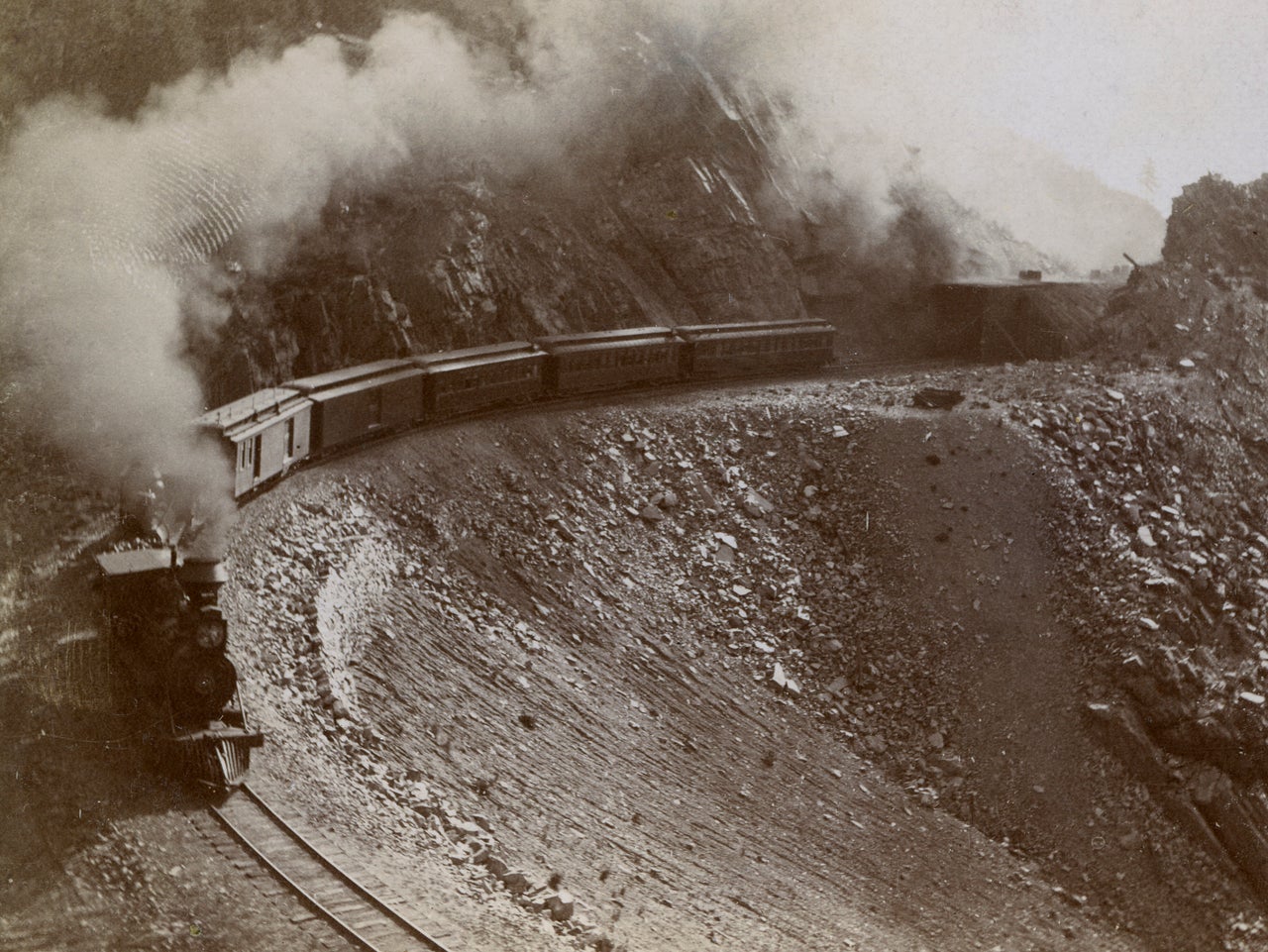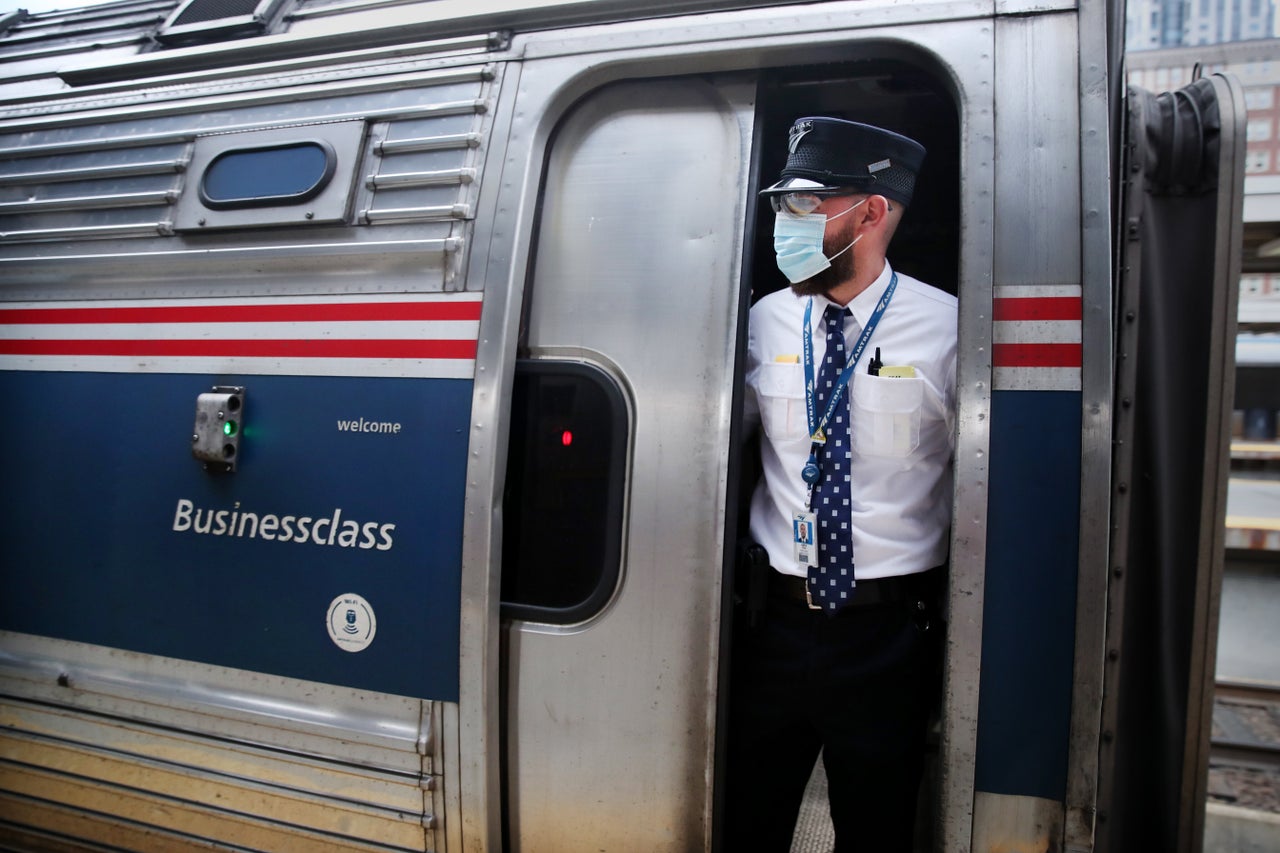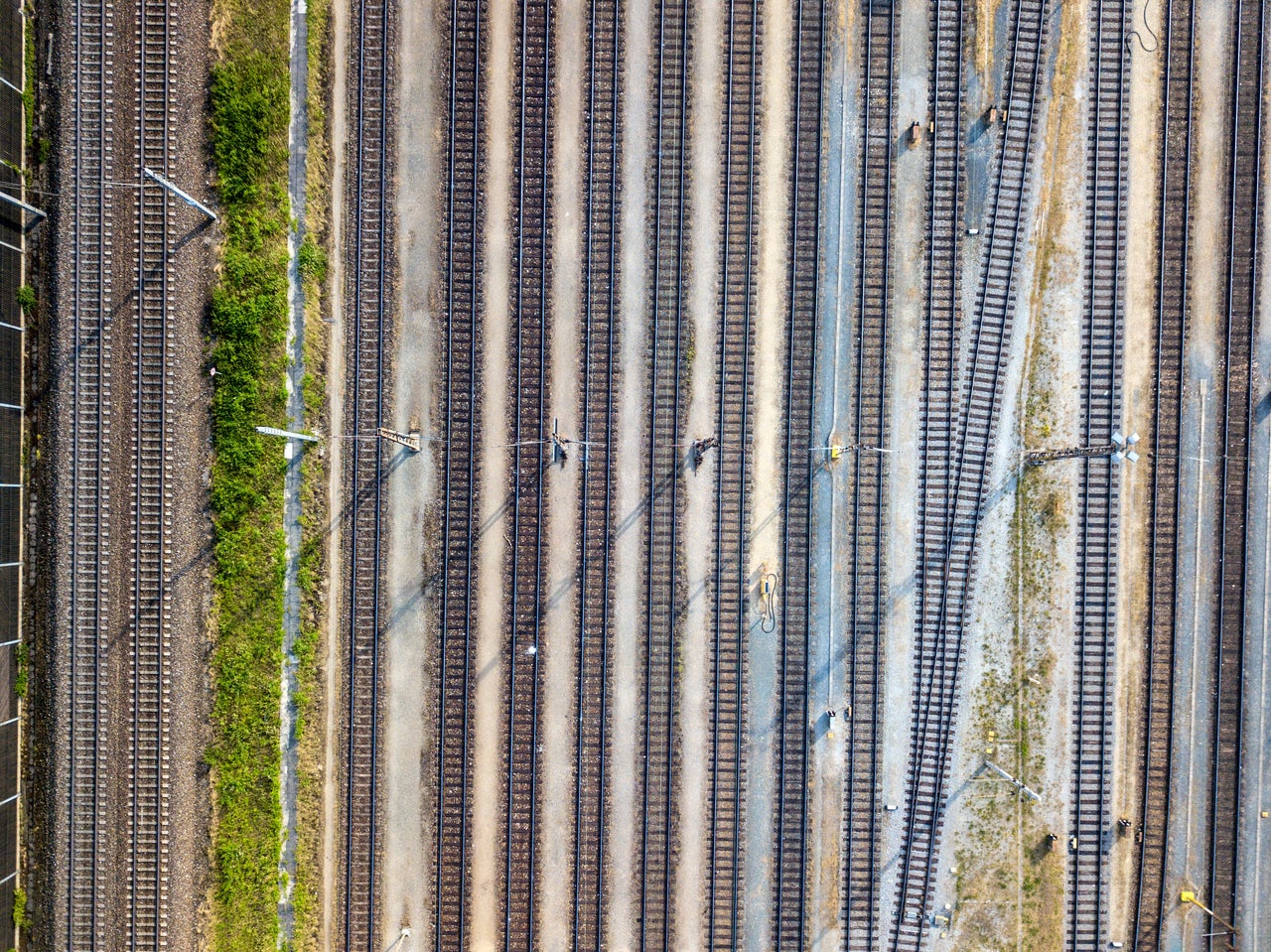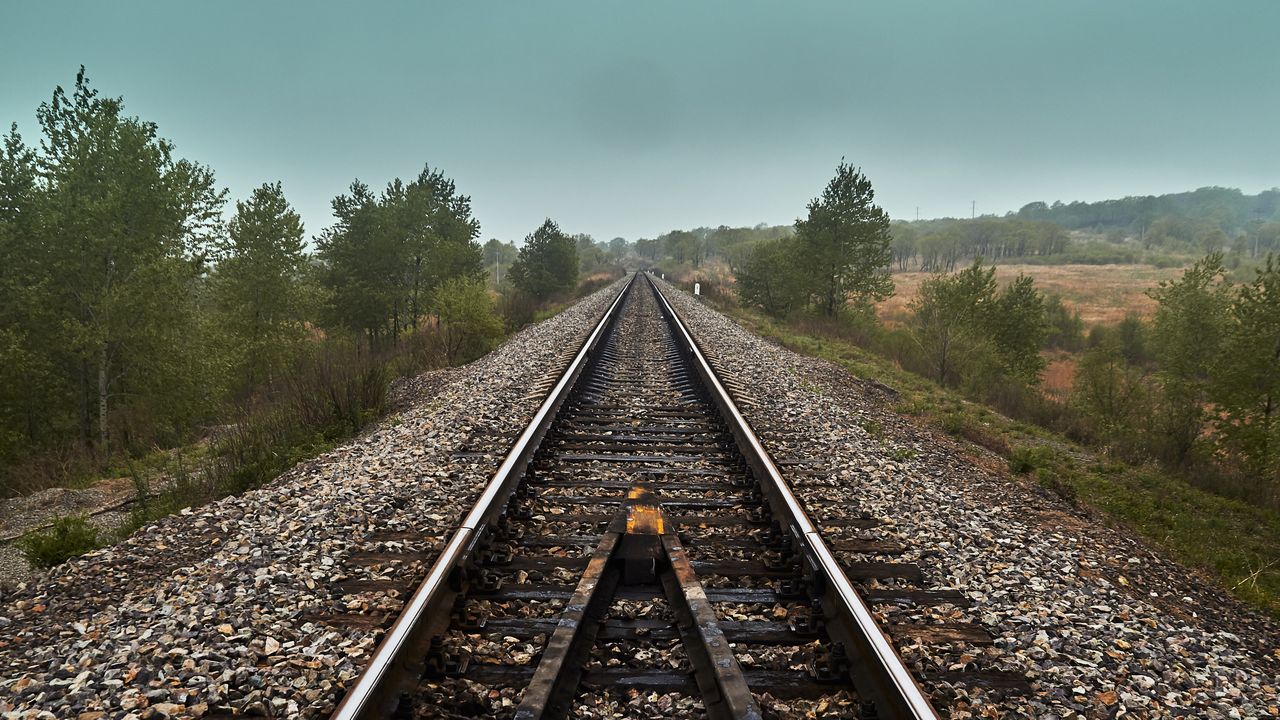The train pulls up to the platform a few minutes ahead of schedule, ready for passengers to board. Once they’ve settled into their spacious seats, the train pulls away, exactly on time. As they speed smoothly through the countryside, hungry passengers visit the dining car for healthy, regionally inspired food. There’s even a play area, complete with a slide, to keep kids entertained during the journey.
This might sound like a utopian vision for railroad travel, but it’s an everyday reality in Switzerland, whose trains were named “best in the world” in 2018.
It is, however, a far cry from train travel in the United States. Even Amtrak’s Northeast corridor service ― which runs from Richmond, Virginia, to Boston and is considered the crown jewel of American passenger rail ― can’t compete with the quality of service found in countries like Switzerland, China, Spain and Japan.
While rail advocates have long called on the U.S. to invest in train infrastructure and commit to building a world-class, coast-to-coast, environmentally friendly passenger rail system, the funding has yet to come. Flying remains the default way to travel between distant cities.
Some see a sliver of hope that this may change, however, as the U.S. grapples with both the coronavirus pandemic and the climate crisis.
For one thing, air travel suddenly looks a lot less enticing in the COVID-19 era. With social distancing nearly impossible at 30,000 feet, anxieties are high and passengers eye each other skeptically, worried that every cough or sneeze will spread the coronavirus. And the pandemic has dealt the aviation industry a catastrophic financial blow, grounding thousands of planes and leading to pay cuts for many of the roughly 715,000 people it employs in the U.S.
The Trump administration agreed to a $25 billion bailout package in April but it’s likely the industry will need help for months or even years to come. Meanwhile, transportation experts, environmentalists and some lawmakers question the logic of continuing to prop up an industry responsible for 3% of U.S. greenhouse gas emissions.
“Does it make sense to do that?” asked Anthony Perl, a professor of urban studies and political science at Simon Fraser University in Vancouver, British Columbia. “Or should we spend some money on an alternative that might be more resilient and post-carbon friendly? We’re still a long way from electric-powered planes.”
Global greenhouse gas emissions from flying could triple between 2018 and 2050, according to the United Nations’ International Civil Aviation Organization. In Europe, some governments are adding “green strings” to pandemic bailout packages for airlines. France and the Netherlands, for example, will require the Air France KLM group to cut emissions per passenger in half and to halve emissions from domestic flights, which, on a per-mile basis, burn far more fuel than long-haul routes.
Overall, these green strings, if they don’t get cut by industry lobbying, would effectively limit the number of short-haul flights that airlines can run ― a technically easy change to make on a continent where there’s already a more environmentally friendly option: frequent, efficient high-speed rail.
That approach wouldn’t immediately work on this side of the Atlantic because the U.S. lacks the necessary railway infrastructure to make up for losing short-haul flights. But advocates argue that federal pandemic-related stimulus money could get rail improvement or expansion projects started. That would create millions of jobs and chip away at U.S. transportation emissions, which currently represent more than a quarter of the national carbon footprint. While it’s hard to nail down precise numbers because of high variance within both modes of travel, it’s clear that rail ― powered by electricity or diesel depending on location ― uses far less energy per passenger-mile than air travel
In short, this could be the perfect time to radically rethink how America travels and finally bring the country’s passenger rail network into the 21st century.
How The Railways Were Built

An efficient national rail system in the U.S. might sound pie-in-the-sky, but there’s a strong historical precedent. In the 19th century, rail was the most practical way to travel overland between distant cities (horse-pulled vehicles being far slower). After the Civil War, the network of tracks grew to span the contiguous United States and territories, with stops in every major settlement. But those railroads, including the tracks themselves, were privately owned. Passengers and politicians alike grew to resent the oligopoly of the railroad companies, which overcharged customers, underpaid workers for what could be dangerous jobs and used their clout with politicians to seize land and evade taxes.
“Railroaders were the original robber barons,” said Perl, author of “New Departures: Rethinking Rail Passenger Policy in the Twenty-First Century.” “The founding legacy of the North American rail industry is one of total disregard for the public interest. Remember William Henry Vanderbilt, who owned the New York Central Railway? His motto was, ‘The public be damned.’”
Reacting to the excesses of the Gilded Age, progressive officials worked to prevent public investment in railroads, which was seen as handing tax dollars over to fat cats. Instead, Perl said, as the automobile emerged as an apparently more democratic mode of transportation, public money flowed into roads (and, much later, aviation).
By the mid-20th century, passenger rail was in deep decline. Amtrak, a quasi-public corporation, emerged out of the ashes in 1971 with the passage of the Rail Passenger Service Act, which brought the country’s remaining 20 passenger railways under the protective wing of the federal government. But unlike many European countries, the U.S. never fully nationalized its rail system. Instead, the tracks themselves mostly remained in the hands of private rail owners, which had by then pivoted entirely to the far more profitable freight sector.
“Rail is still the only major mode of transportation where the infrastructure is private property,” Perl said. “Passenger rail is kind of a victim of its own early success, and this legacy makes it much harder for North America to deal with the railroads. It’s a lot of baggage to carry.”
Time To Change Track
Today, with the exception of the busy Northeast Corridor service — which runs mostly along state-owned tracks, as well as sections that Amtrak inherited from bankrupt railroads in the 1970s — publicly owned passenger trains run on rail that belongs to freight companies, which prioritize their own trains, rendering passenger service unreliable.
Modernizing the U.S. rail system would involve fixing existing tracks and laying new ones, improving signaling technology and replacing trains, but Perl said that simply adding sidetracks to allow trains to more easily pass one another would go a long way. Making even that happen, however, would require untangling a mess of regulation and property rights.

Still, until the coronavirus arrived, passenger rail’s prospects were looking up. Last fall, Amtrak announced record ridership that put it on track to make a profit in 2020, for what would have been the first time in its history. Like nearly every industry, however, rail suffered as states shut down their economies. Amtrak reported a 95% drop in ridership this April compared to last year (it will use at least $1 billion in federal relief funds to make up for lost ticket sales).
Although Amtrak’s situation was comparable to the 96% decline in air travel that same month, it’s possible that in an era of social distancing, trains may have a few advantages that airlines lack. Given much lower per-passenger fuel costs, operating a half-full train could make more sense than flying a half-full jet. Airlines pack seats into narrow cabins; trains’ comparative spaciousness allows passengers to sit farther apart. Air travel also involves hours standing in line at airports, a potential hazard given that the virus spreads more easily in crowded conditions indoors.
While it remains to be seen whether air travel will pick up post-pandemic, the nation’s interest in rail certainly seems to be growing, and new passenger rail projects are springing up across the country. The private Texas Central Railway just announced the publication of its final environmental impact statement, an important regulatory milestone on the way to beginning construction of its proposed Dallas-to-Houston line. In Florida, the privately owned Brightline, which will eventually connect Miami with Orlando, reported steadily increasing ridership and revenues before shutting down temporarily due to COVID-19. And on the public side, the California High-Speed Rail project continues to plug away despite delays, while the state of Virginia is spending $3.7 billion in a deal with freight company CSX to expand its D.C.-to-Richmond service.
In several cases, these advances involve new deals between public railways and the private freight companies that own the tracks, which suggests the paralysis that has gripped U.S. rail infrastructure for decades may be loosening.
What Should Our Stimulus Priorities Be?

So far, federal economic assistance related to the COVID-19 crisis has focused mostly on helping American businesses and individuals simply survive the lockdowns. But in May, Rep. Seth Moulton (D-Mass.) released a stimulus plan that would specifically target passenger rail. He wants to spend $205 billion over five years to build a national high-speed rail network, a scheme that his office calculated would create at least 725,000 jobs a year ― jobs that will be much needed in a nation with more than 40 million new unemployment claims since March ― for about a quarter of what is spent on the Defense Department in a single year.
Rail is the mode that “best supports 21st-century development in bustling urban centers, walkable downtowns even in much smaller cities and towns and the agglomeration economies of cities and megaregions that are driving the vast majority of current economic growth,” according to a white paper laying out Moulton’s plan. In other words, trains are not only better for the environment than other modes of transportation, but they can also promote the kind of density that makes communities greener and allows economies to grow.
While previous stimulus efforts, including after the 2008 recession, focused on highways, Moulton said that “investment is achieving diminishing returns.” Highways promote sprawl, leading to longer commutes and more emissions while making regional economies less efficient, he argued. “Forcing everyone into more cars or over-crowded planes has failed for our international peers and is failing here at home,” the congressman said.
The United States has prioritized roads and planes for decades, and it’s going to take more than a single stimulus bill, however ambitious, to change that. And the window for real change is closing, said Sean Jeans-Gail, vice president for policy and government affairs at the Rail Passengers Association, a D.C.-based advocacy group.
While the world is up against a lot in 2020, and other priorities may have eclipsed the environment, that doesn’t mean the threat of climate change has gone away. It might never seem like a convenient time to invest in greener transportation, Jeans-Gail said, but the pandemic recovery may give us a perfect excuse to act. He predicts fundamental shifts in our transportation network as we enter the post-pandemic era. “And not only in the willingness of people to get on airplanes — those small steel tubes with poor ventilation,” he said.
Recent investments in rail are a positive sign, but they’re still “nibbling at the edges,” Jeans-Gail argues. Pandemic stimulus money coupled with adoption of the Green New Deal ― a plan proposed by congressional Democrats to tackle climate change, which calls for high-speed rail among other measures ― could make a real difference.
“If there were a lot of money that somehow became available because of COVID, that could be the key,” he said. “Maybe we could do something on the level of what the Eisenhower administration did with the highways in the 1950s ― connect every part of the country and have that sort of 21st-century rail system that you see in almost every other part of the world, except the U.S.”
For more content and to be part of the “This New World” community, follow our Facebook page.
HuffPost’s “This New World” series is funded by Partners for a New Economy and the Kendeda Fund. All content is editorially independent, with no influence or input from the foundations. If you have an idea or tip for the editorial series, send an email to thisnewworld@huffpost.com.
